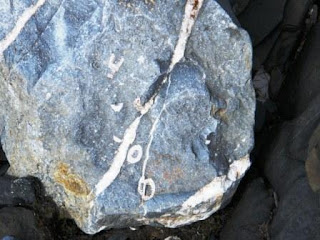
The only odd aspect to the place is that as a defensive redoubt it woud have been useless as it is closely overlooked by a higher hill from where it would have been easy to lob missiles over the walls

Not very easily defended !
The explanation given on the information board is that it was built during the Romano-British period by the local tribe who were allies of the Romans and didn’t need it for defence so it was purely for prestige. This doesn’t sound right. If one was looking to build a site to show off wealth or social standing, it would still be built on the highest point.
The explanation given on the information board is that it was built during the Romano-British period by the local tribe who were allies of the Romans and didn’t need it for defence so it was purely for prestige. This doesn’t sound right. If one was looking to build a site to show off wealth or social standing, it would still be built on the highest point.
Looking at the view across the flat fertile Lothian fields to the sea which is due east and where the sunrise would be very obvious with Berwick Law, that conical volcanic mount, acting as a marker, I wondered if it had been an older pagan religious site which had been taken over by the Otadini who were probably Christian in the Roman period.
Whatever the reason, it is an impressive monument.
The nearest village is Athelstaneford where, according to legend, a combined army of Picts and Scots of Alba defeated the Anglo-Saxons of Northumbria and secured the Lothians for the embryonic nation that was to become Scotland. Apparently Oengus, the Pictish king of Alba, had seen a symbol of the St Andrew’s cross in the sky and vowed that if he achieved victory he would adopt is his nation’s symbol.
Whatever the reason, it is an impressive monument.
The nearest village is Athelstaneford where, according to legend, a combined army of Picts and Scots of Alba defeated the Anglo-Saxons of Northumbria and secured the Lothians for the embryonic nation that was to become Scotland. Apparently Oengus, the Pictish king of Alba, had seen a symbol of the St Andrew’s cross in the sky and vowed that if he achieved victory he would adopt is his nation’s symbol.
 A view across the battle site to Berwick Law
A view across the battle site to Berwick LawThere is a heritage centre in a 16th century doocot behind the village church overlooking the battle field.
The doocot
Lo and behold, as we climbed to the top of Chesters, two vapour trails formed a X- shaped cross in the sky.

The doocot
Lo and behold, as we climbed to the top of Chesters, two vapour trails formed a X- shaped cross in the sky.

Perfect timing or what.


 Fossils
Fossils


